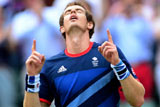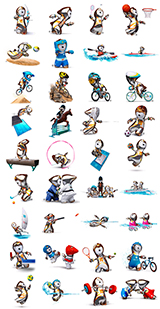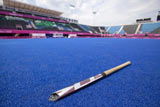
Equestrian
Updated: 2012-05-14 16:31:45
(london2012.com)
|
|||||||||||
The Equestrian competition at London 2012 is made up of three disciplines: Dressage, Eventing and Jumping. Each discipline requires different skills from the riders and horses competing.

Competition dates
Dressage: Aug 2 - 9
Eventing: July 28 - 31
Jumping: Aug 4?- 8
Competition venue
Greenwich Park
Number of medal events
Six – there is a team and an individual competition in each of the three Equestrian disciplines.
Number of competitors
200?(men and women compete together in all three disciplines).
Team Dressage
The basics
In modern Dressage competitions, the horse and rider perform a series of movements known as a Dressage test. The tests are performed before a panel of seven judges, who award scores for individual movements and for the overall routine.
The Dressage competition consists of a Team event (made up of three athletes/horses), which includes the Grand Prix and Grand Prix Special rounds; and an Individual event, which includes the Grand Prix and the Grand Prix Special as qualifiers for the Grand Prix Freestyle (the competition that decides the final Individual classification). The Team and Individual events are conducted simultaneously: a rider’s score in a test will be relevant for both events.
Competition format
After the first phase, the Grand Prix, the best seven teams (including any teams tied for seventh place) and the best 11 individuals (including any tied for 11th place) who are not already qualified as team members, progress to the next phase, the Grand Prix Special.
The Team event medals are decided by the total of the scores in the Grand Prix and the Grand Prix Special.
After the Grand Prix Special, the best 18 individuals (including any tied for 18th place) go through to the Grand Prix Freestyle. Riders are selected to go through on the basis of their performance in the Grand Prix Special only.
Performance in the Grand Prix Freestyle determines the medals in the Individual event.
Individual Dressage
The basics
In modern Dressage competitions, the horse and rider perform a series of movements known as a Dressage test. The tests are performed before a panel of seven judges, who award scores for individual movements and for the overall routine.
The Dressage competition consists of a Team event (made up of three athletes/horses), which includes the Grand Prix and Grand Prix Special rounds; and an Individual event, which includes the Grand Prix and the Grand Prix Special as qualifiers for the Grand Prix Freestyle (the competition that decides the final Individual classification). The Team and Individual events are conducted simultaneously: a rider’s score in a test will be relevant for both events.
Competition format
After the first phase, the Grand Prix, the best seven teams (including any teams tied for seventh place) and the best 11 individuals (including any tied for 11th place) who are not already qualified as team members, progress to the next phase, the Grand Prix Special.
The Team event medals are decided by the total of the scores in the Grand Prix and the Grand Prix Special.
After the Grand Prix Special, the best 18 individuals (including any tied for 18th place) go through to the Grand Prix Freestyle. Riders are selected to go through on the basis of their performance in the Grand Prix Special only.
Performance in the Grand Prix Freestyle determines the medals in the Individual event.
Team Eventing
The basics
The Eventing competition takes places over four days. As with all three Equestrian disciplines on the Olympic programme, the competition features both Individual and Team events, and men and women compete against each other on equal terms.
Dressage fills the first two days of the Eventing competition. Each horse and rider performs a dressage test in front of a panel of judges. The total score is converted into penalty points, which are carried forward to the next stage of the competition.
Day 3 is the cross-country test, held over a beautiful but tough course in Greenwich Park containing up to 45 jumps. Every horse/rider combination is given penalty points for jumping errors and time penalties, which are added to any penalty points awarded during the dressage test to give a total score.
The Eventing competition gets a grandstand finish on Day 4 with the jumping tests (widely known in the UK as showjumping). Once again, riders and horses are given penalty points for jumping errors and time penalties, which are added to their previous dressage and cross-country scores to determine the overall rankings.
The first jumping test decides the placings in the Team event; after this has been completed, a second jumping test determines the winners of the Individual competition.
Competition format
Scores are cumulative across all three phases, with the best total determining the winner. Teams can consist of up to five athlete/horse combinations, but only the best three results will count towards the team’s score.
After the first jumping test, the best 25 riders (as well as any who are tied for 25th place) go through to the second jumping test. Placings for the Individual event are determined by the sum of the dressage, cross-country, first jumping test and second jumping test scores.
Individual Eventing
The basics
The Eventing competition takes places over four days. As with all three Equestrian disciplines on the Olympic programme, the competition features both Individual and Team events, and men and women compete against each other on equal terms.
Dressage fills the first two days of the Eventing competition. Each horse and rider performs a dressage test in front of a panel of judges. The total score is converted into penalty points, which are carried forward to the next stage of the competition.
Day 3 is the cross-country test, held over a beautiful but tough course in Greenwich Park containing up to 45 jumps. Every horse/rider combination is given penalty points for jumping errors and time penalties, which are added to any penalty points awarded during the dressage test to give a total score.
The Eventing competition gets a grandstand finish on Day 4 with the jumping tests (widely known in the UK as showjumping). Once again, riders and horses are given penalty points for jumping errors and time penalties, which are added to their previous dressage and cross-country scores to determine the overall rankings.
The first jumping test decides the placings in the Team event; after this has been completed, a second jumping test determines the winners of the Individual competition.
Competition format
Scores are cumulative across all three phases, with the best total determining the winner. Teams can consist of up to five athlete/horse combinations, but only the best three results will count towards the team’s score.
After the first jumping test, the best 25 riders (as well as any who are tied for 25th place) go through to the second jumping test. Placings for the Individual event are determined by the sum of the dressage, cross-country, first jumping test and second jumping test scores.
Team Jumping
The basics
The Jumping competition is a tense, exciting test of skill, speed and power. Riders are timed on the course as they jump over obstacles that may include parallel rails, triple bars, water jumps and simulated stone walls.
Penalties are awarded for jumps not cleared correctly. The winner is the rider and horse that finishes with the fewest penalties in the fastest time.
As with all three Equestrian disciplines on the Olympic programme, the competition features both Individual and Team events, and men and women compete against each other on equal terms.
Competition format
There are a total of five rounds in the Jumping competition, with all five playing a part in the Individual event. Two of these rounds are used to determine the placings in the Team event.
First round: First Individual competition All riders compete in the first qualifier. The best 60 Individual riders (including those tied for 60th place) and all Team riders ranked lower than 60 progress to the second round.
Second round: first round of Team competition and second Individual qualifying competition The best 45 individual riders (including those tied for 45th place), based on combined scores from both rounds, and the best eight teams (including those teams tied for eighth place), based on scores from this round only, progress to the third round.
Third round: second round of Team competition and third Individual qualifying competition The final placings for the Team event are determined by the sum of the scores in the first and second round of the Team competition.
After the third round, the best 35 riders (including those tied for 35th place), based on the combined scores, with a maximum of three from each country, progress to the fourth round.
Fourth round: Individual final round A The best 20 riders (including those tied for 20th place), based on scores from this round only, progress to the fifth round.
Fifth round: Individual final round B The final placings for the Individual event are determined by the sum of the scores in the Individual final rounds A and B.
If two or more rider/horse combinations are tied for medal places after the fifth and final round of the Individual event, there is a jump-off to break the tie.
Individual Jumping
The basics
The Jumping competition is a tense, exciting test of skill, speed and power. Riders are timed on the course as they jump over obstacles that may include parallel rails, triple bars, water jumps and simulated stone walls.
Penalties are awarded for jumps not cleared correctly. The winner is the rider and horse that finishes with the fewest penalties in the fastest time.
As with all three Equestrian disciplines on the Olympic programme, the competition features both Individual and Team events, and men and women compete against each other on equal terms.
For a complete set of rules, please refer to the website of the International Equestrian Federation (FEI), governing body for the sport.
Competition format
There are a total of five rounds in the Jumping competition, with all five playing a part in the Individual event. Two of these rounds are used to determine the placings in the Team event.
First round: First Individual competition All riders compete in the first qualifier. The best 60 Individual riders (including those tied for 60th place) and all Team riders ranked lower than 60 progress to the second round.
Second round: first round of Team competition and second Individual qualifying competition The best 45 individual riders (including those tied for 45th place), based on combined scores from both rounds, and the best eight teams (including those teams tied for eighth place), based on scores from this round only, progress to the third round.
Third round: second round of Team competition and third Individual qualifying competition The final placings for the Team event are determined by the sum of the scores in the first and second round of the Team competition.
After the third round, the best 35 riders (including those tied for 35th place), based on the combined scores, with a maximum of three from each country, progress to the fourth round.
Fourth round: Individual final round A The best 20 riders (including those tied for 20th place), based on scores from this round only, progress to the fifth round.
Fifth round: Individual final round B The final placings for the Individual event are determined by the sum of the scores in the Individual final rounds A and B.
If two or more rider/horse combinations are tied for medal places after the fifth and final round of the Individual event, there is a jump-off to break the tie.
Medal Count |
||||
| 1 | 46 | 29 | 29 | |
| 2 | 38 | 27 | 22 | |
| 3 | 29 | 17 | 19 | |
| 4 | 24 | 25 | 33 | |
| 5 | 13 | 8 | 7 | |
| 6 | 11 | 19 | 14 | |















